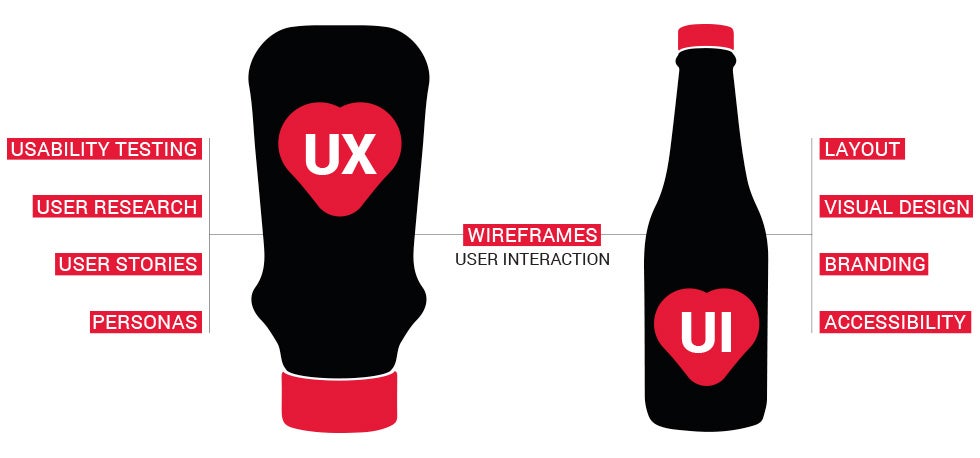There are many analogies to differentiate User Experience (UX) and User Interface (UI) design, but the one I favour the most is the house: UX is the structure and the function (electrics, plumbing, layout); UI is the paint, the faucets, doorknobs, and other hardware. Let’s get more specific.
What is User Experience Design?
User Experience encompasses the whole journey that a potential or active customer takes in interacting with a company - the term isn’t solely associated with digital and can incorporate everything from interactions with customer service to product packaging. A UX Designer conducts competitive analyses, considers business and marketing goals and objectives, and determines what users' pain points are, and how a certain product or service will solve them.
Considering a company’s digital assets, a UX Designer always returns to the users, and maps out their journeys, considering information architecture - how content is organised and labelled - and what features and functionality the users might need. By understanding the target audience’s goals, UX designers can make good decisions that take an audience where they want to go - efficiently. They then create wireframes - these are the blueprint for the asset being delivered.
What is User Interface Design?
Unlike UX, UI is strictly a digital term. UI Design is about the look and feel of the asset the user interacts with to answer their need. It’s all about making sure it’s as intuitive as possible - and this requires careful consideration of every element a user will encounter - themed appropriately, and aesthetically pleasing. If the UI is really good, the user may not even realise it’s there.

The two disciplines complement each other
Where the two overlap is in user interaction; but whereas UX designers are in charge of determining how the user interface operates, UI designers are tasked with how it will look when interacted with. They’re also integral in determining how accessible it is.
Research is important to both - and ideally iterative. A UX Designer often researches with the help of prototypes and usability sessions. Or, if it’s a digital asset already available to the public, it may be testing with the help of 2 or more different versions of an interface to determine which one users prefer. UI Designers need to understand user expectations - and ensure the visual language they’re using matches the theme of the application they are designing. This often involves research into how similar apps have been designed in the past. Not only is there no sense in reinventing the wheel, it’s recommended that designers stick to what has worked before.
Why is the distinction important?
Businesses needing a digital asset brought to market, need to understand what services are being offered by the agencies they are looking to partner with - otherwise they may end up hiring an agency that does not offer all the services they require, or doesn’t have the expertise to complete the job. UX and UI are essential parts of driving revenue growth through great customer experience, and should not be skimped on.
Meet the heads of Devotion’s UX and UI Teams

Sarah Campbell, Head of UX
I've been working for Devotion for 10 years this September - woohoo! I head up the UX team and love the satisfaction that comes with crafting customer experiences that deliver meaningful results, to both the business (our client) and the end-user. Learn a bit more about me.

Wesley Joseph, Head of Design
Wes has also been working for Devotion for 10 years (in November), and heads up Devotion’s UI team. Learn a bit more about Wes.



